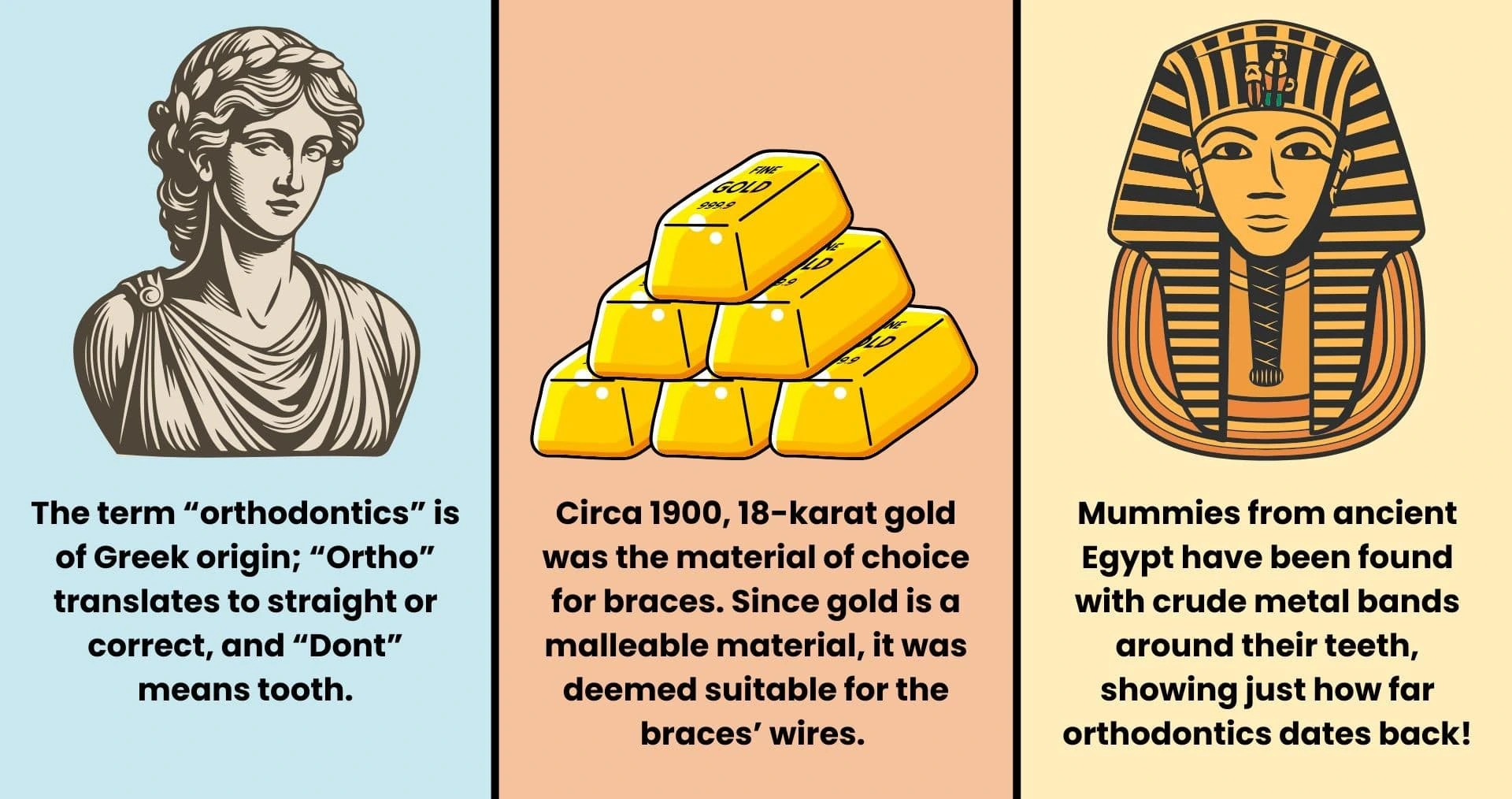25 Orthodontic Stats & Facts That Will Surprise You

In this article, we’ll explore some of the most eye opening numbers shaping orthodontics in both the UK and beyond. Drawing on reputable sources such as the British Orthodontic Society (BOS), we'll highlight the huge increase in treatment spikes, why more patients are choosing to go private, and the economic increase caused by the rise of private orthodontists!
The Latest Orthodontic Statistics in the UK…
- Around 200,000 young people receive NHS-funded orthodontic treatment in the UK (BOS)
- Around ⅓ of all children in the UK could benefit from orthodontics (Bupa)
- The waiting list for NHS braces in 2025 varies per area, but in some cases, qualifying children will have to wait up to 2 years (Accessible Orthodontics)
- Around 25% of young people have tooth extractions before wearing fixed braces (BOS)
- Within the last 3 years, 76% of private orthodontists have reported an increase in adult patients seeking orthodontic treatment (BOS)
- The rise of adult patients has been fuelled by online working/socialising and video calls, with over 65% of orthodontists stating this is a major factor for seeking treatment, known as the “Zoom Boom” (BOS)
- Over 35% of orthodontists say their adult patients are also influenced by celebrities and social media influencers (BOS)
- The majority of adult patients receiving orthodontic treatment (83%) are aged between 26 to 55 (BOS)
- A worrying 88% of orthodontists are concerned that patients are seeking DIY treatment options, which are ineffective and may cause more harm than good (BOS)
- The UK’s orthodontics industry is expected to be worth £272.5 million by 2027 (Fortune Business Insights)
The Latest Orthodontic Statistics Around the World…
- 2025 data by Align Technology (who manufacture Invisalign aligners) confirmed that over 20 million people around the world have undergone Invisalign treatment (Invisalign)
- The global market for orthodontic services is predicted to grow at a Compound Annual Growth Rate (CAGR) of 11.5% between 2023 and 2030 (Globe Newswire)
- By 2030, the global orthodontics market is expected to be worth approximately $10.9 billion (roughly £8 billion), driven by technological advancements and increased aesthetic preferences (Globe Newswire)
12 Interesting Facts About Orthodontics

- The term “orthodontics” is of Greek origin; “Ortho” translates to straight or correct, and “Dont” means tooth.
- Circa 1900, 18-karat gold was the material of choice for braces. Since gold is a malleable material, it was deemed suitable for the braces’ wires.
- Mummies from ancient Egypt have been found with crude metal bands around their teeth, showing just how far orthodontics dates back!
- The first “modern” orthodontic appliances date back to 1728, as described by the “father of dentistry”, Pierre Fauchard, in his book “The Surgeon Dentist”. The foundations of this original design are still used!
- Edward H. Angle became the first dentist to specialise in orthodontics in 1889, and formed what is now known as the American Association of Orthodontics in 1901.
- Thumb sucking and dummies can actually harm the normal growth of teeth, pushing them out of place and distorting the jawbone.
- It is recommended for children to have their first orthodontic evaluation as young as 7 years old; early intervention can help stop issues from becoming more complicated.
- Some braces are made of “space age wire”, a nickel-titanium alloy that was originally created by NASA to use for satellite solar panels and antennae.
- You must undertake several qualifications to become an orthodontist: a 5-year degree course in dentistry, a period of gaining experience in all fields of dentistry, and then a further 3 years on an orthodontic training scheme.
- Orthodontics has greatly benefited from the latest technology, including high-spec digital imaging, 3D scanning, and computer simulations for the most accurate treatment.
- Invisalign was first invented back in 1997 by two Stanford University graduates, Zia Chishti and Kelsey Wirth, who wanted to find a more convenient alternative to braces.
- Although there are now many other popular types of aligners, such as Angel, Invisalign is the largest international distributor - their aligners are available in over 90 countries!
Why Is Orthodontics on the Rise?
Advances in orthodontic technology, like virtually invisible aligners and faster treatment options, have made achieving a straight, healthy smile more accessible and comfortable than ever before. Coupled with growing aesthetic awareness fueled by social media and celebrity “influencers”, more people are eager to invest in the appearance of their smile.
Flexible payment plans and rising confidence in the long term oral health benefits are also large contributing factors to the fast rise in treatment numbers. Similarly, it is now more widely understood that orthodontic solutions are suitable for adults, not just children and teenagers!
Need Orthodontic Treatment? Contact Us for a FREE Consultation!
Ready to transform your smile for greater oral health? Add to the growing number of successful patients at our Oxford-based private clinic and beat the queues for NHS-funded treatment!
We offer a FREE, no-obligation consultation - scheduled either online or in person - to discuss your orthodontic problems and the types of treatment that we offer. Simply contact us today to arrange this, and we’ll be on hand to assist with any other questions you may have.
Latest Posts
-
Preparing Your Child for Their First Braces Appointment
-
Dealing with Braces Pain: How to Comfort Your Child
-
Brace-Friendly Meal Ideas
-
What Causes Crooked Teeth (and Can You Prevent It?)
-
Top 10 Signs Your Child May Need Braces: Advice From an Oxford Orthodontist
-
25 Orthodontic Stats & Facts That Will Surprise You
-
What Foods Can & Can’t You Eat With Braces?
-
Invisalign vs Braces | Which Is Best for You?
-
How Much Do Braces Cost in 2025?
-
What Are the Alternatives to Braces?